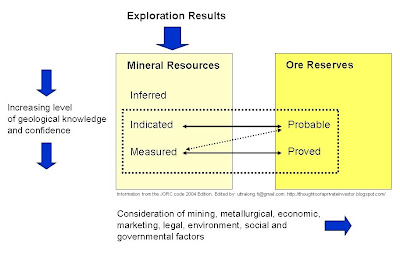According to Orion's Q3 2011 presentation, Entacapone molecule patent expires in November 2012 in EU. It expires a year later in USA (October 2013). This is the key patent for Stalevo, Comtess and Comtan, which are the best selling drugs of the company related to Parkinson's disease. Combined sales of these drugs was 252,7 million euros in 2010. All proprietary drugs for humans based on a molecule patented by Orion are listed in the following table. As you can see, there are not many of them:
Proprietary drugs for humans based on molecule originally patented by Orion
Stalevo enjoys data protection in EU until October 2013. Thus, it will probably take until 2014 that there will be generic competition for Stalevo in EU (this was an estimate in Orion's CMD 2010 presentation). Comtan has data protection in Japan until 2015. Stalevo has not been yet launched there.
It is in Stage III in R&D pipeline. When approved, it should get 6 year exclusivity (my own interpretation).
According to Wikipedia test data exclusivity is as follows:
- United States: 5 Years for new pharmaceutical chemical entities, 3 years for new indications for pharmaceutical drugs, and 12 years for biologic products.
- European Union: 8 Years (+ 2 Years market exclusivity + 1 year for new indication)
- Japan: 6 Years
- China: The government promised a protection period of 6 years for pharmaceutical drugs, when applying for membership to the World Trade Organization (WTO).
When generic drugs enter the market
Once it is possible for generic drugs to enter the market, they won't eat all of Orions profits overnight. Based on what I found from internet, it seems to be common that generics may take 50% of the market share in 12 months and 80% in 24 months. However, after that the decrease will be slow. The most loyal customers are left. Rather than slashing prices, the company behind the branded drug which has lost protection might actually increase the price of the drug rather than enter into price war with the generic alternatives. Whatever they do they are sure to lose revenue compared to time before the patent expiration.
In case of Orion, it will probably take until 2014 before the effect from losing protection in EU and US for some of its key drugs start to show in results. Meanwhile, a lot can happen. They may launch some new drugs or introduce existing drugs to new markets (like Stalevo for Japan). Also, existing sales of other product segments (>50% of the company) can grow.
Worst case scenario
In the event that they would fail in these actions and top line (net sales) would shrink gradually about 290 million euros by 2020 they could lose 70% of their bottom line unless they would adjust R&D and sales etc. costs. This is very unlikely scenario. Even if they would lose all that sales and get nothing offsetting that they would most certainly adjust their fixed costs (R&D, sales, general costs) to soften the impact on bottom line unless they were sure that investments to R&D and sales would pay off later.
Even in the worst case scenario I would expect them to be able to provide 6,5 euros worth of dividends from the company from years 2011-2020 discounted to this date with 5% rate. All this naturally assumes that they maintain the high payout ratio of over 90% of net result. And even if this worst case would happen you would still have a profitable company although that profits would be smaller and dividend yield not what it is now (compared to current stock price).
Looking at Orion's research areas
In the field of proprietary products, Orion's key compteneces are focused on selected areas of central nervous system disorders and critical care. In recent years, also urology and prostate cancer have become strong areas of expertise. I think these are cleverly chosen areas of expertise. They address mainly aging population. The pharmaceutical industry in general should get lift from this and the fact that the population in developing economies get increasingly wealthy leading to increased standard of living and better access to health care.
R&D pipeline of the company has so far produced 8 proprietary drugs four of which are for humans and four for animals. It has in-licensed patented products such as Enanton, Vantas and Kentera. The easyhaler product line is based on generic active substances. The company does R&D collaboration in cancer research.
The therapy areas of research are:
- central nervous system
- oncology (cancer)
- critical care
- inhaled medical products
- generics
- animal health
R&D pipeline
Stage III (i.e. last clinical phase for marketing authorisation):
- Easyhaler combined formulations for asthma and COPD (chronic obstructive pulmonary disease)
- Stalevo for Japanese market (Parkinson's disease)
Stage II:
- Androgen receptor antagonist for advanced prostate cancer (partner: Endo Pharmaceuticals)
- Alpha 2c receptor antagonist for Alzheimer's disease
- Alpha 2c receptor antagonist for Raynaud's phenomenon
Stage I:
- More effective levodopa product for Parkinson's disease
- Dexmedetomidine (non-intravenous) for pain management (partner: Recro Pharma)
Pre-clinical:
- Projects for prostate cancer, neuropathic pain, Parkinson's disease and Alzheimer's disease
Clinical phases typically last as follows according to Orion:
- Phase III (last stage): More than 3 years
- Phase II: 1-3 years
- Phase I (first stage): 1 year





















